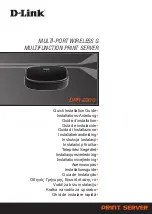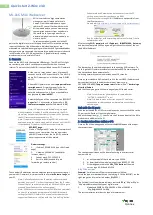
Appendix B: Safety and regulatory compliance information
Option
Description
◦ Ensure that power is removed from the DC circuit before installing or
removing power supplies.
5. Handling Fiber Channel cables
◦ Always read and comply with the handling instructions on the shipping container.
◦ Follow all ESD precautions and approved fiber cleaning procedures.
◦ The fiber is made of a very pure, expensive glass and should be treated with great care. Handle
fibers only in areas that are very clean and do not contain sharp objects.
◦ Wear finger cots or gloves as dirt and oils can damage the fiber and contaminate connectors.
◦ Do not allow kinks or knots to develop in the fiber. If tangles occur, carefully work out the tangles
avoiding pulling or bending the fibre beyond its bend radius.
◦ Always use the correct tools for stripping and cleaving the fiber. It will save time and reduce
breakage caused by scratches.
◦ If you must secure a bundle of fiber cables together, avoid plastic and metal tie wraps; secure with
Velcro instead.
6. Disposing of the unit
◦ Dispose of the unit and its components (including batteries) as specified by all national laws and
regulations.
Disassembling an end-of-life product
Review guidance on responsible product disposal and recycling of a product.
For disassembly instructions, please call the technical support in order to remove components requiring
selective treatment, as defined by the EU WEEE Directive (2012/19/EU). See
Assistance Center contact information
on page 226
.
1. Disassemble equipment at a dedicated area only, gather the needed tools for disassembly.
2. Remove covers, housing, etc.
3. Remove and separate sub-assemblies (i.e. cables, metals, displays, fans, etc.).
4. Separate hazardous materials from the remainder of the material.
a. Sort hazardous materials into their different types (i.e., batteries, hazardous liquids, hazardous
solids, fiberglass, etc.).
b. Proceed with hazardous waste management processes only.
5. Identify re-usable materials/sub-assemblies and separate these from the rest of the material.
6. Identify and separate recyclable materials as per below examples:
a. Scrap material to be sent to smelter(s).
b. E-waste such as displays, CPU's, cables and wires, hard drives, keyboards, etc.
c. Metals such as steel, brass, and aluminum.
d. Plastics such as fan casings, housings, covers, etc.
e. Fiber optics and plastic tubing not containing electrical or data wiring.
242













































